A statement from the 1907 U.S. Army’s Rules, Regulations and Instructions for soldiers and scouts on duty in Yellowstone warns, “All persons traveling through the park from October 1 to June 1 should be regarded with suspicion.”
Who besides poachers would brave bitterly cold weather; hidden, yet scalding hot springs; isolation and desolation; almost impossible travel conditions and difficult route finding? Who besides a bison killer or elk shooter would venture into one of the most remote and unknown places in the country…in winter?
In the early days of Yellowstone National Park, winter visitors were primarily poachers, prospectors, and army personnel who were directed to manage the park and catch the poachers. Even then there were a few tourists kicking and gliding their way through Wonderland on ten-foot-long skis—basically wooden planks—and steering with a single seven-foot pine pole.
Many years later, I was one of those tourists, albeit with twenty first century equipment, pulling into Yellowstone Expedition’s Yurt Camp at Canyon. Sure, we got there in a heated snowcoach driven on a groomed road, but upon first glance at my residence for the next four days all I could think was, “this is going to be really cold.”
Two yurts, connected to function as a kitchen and dining area, glowed warmly in the early evening darkness, but the “yurtlets” (small plywood rooms with canvas roofs, modeled after ice fishing huts) appeared frigid. I was quick to learn that propane heaters kept them warmer than my house if I turned them up.
For soldiers to catch poachers, they had to think like poachers. That meant moving around the park and not just sticking to the “soldier stations” near visitor attractions. In 1890, U.S. Army Captain Frazier Boutelle got funding to build six “snowshoe cabins,” about a day’s trip apart from each other. These cabins were stocked with bedding, fuel, cooking utensils, an ax, a shovel, and other backcountry provisions. Thus, the soldiers were able to travel light and sneak up on poachers.
We had our own “snowshoe cabins,” but ours were better provisioned than a soldier’s in the late 1800s. A mattress topped with several comforters filled much of the yurtlet. Next to it was a set of plastic drawers, a lamp, and the propane heater. A clothesline hung from the rafters and hooks lined two walls, allowing for drying and organizing of 21st century gear.
That afternoon, our group of eight, consisting of five friends from Oregon, a woman from California, my ski buddy from Jackson, Wyoming, and me split up. Half of us skied through thick lodgepole pines to the edge of the Grand Canyon of the Yellowstone. The other half snowshoed. Our guides, Brian, Jeff, and Kayla, pointed out the sights in the low winter light.
Everyone says winter in Yellowstone is magical; a cliché that’s too true to ignore. The familiar is rendered unknown by a cover of snow. Aspens that shine white in the summer sun appear yellowed against the nivean landscape. Tracks tell tales on animals whose stories would be hidden without the impressionable surface to chronicle them. Skiing and snowshoeing along the north rim of the canyon was a world away from driving from lookout to lookout with the summer throngs, stopping only briefly to snap photos of the falls and ospreys.
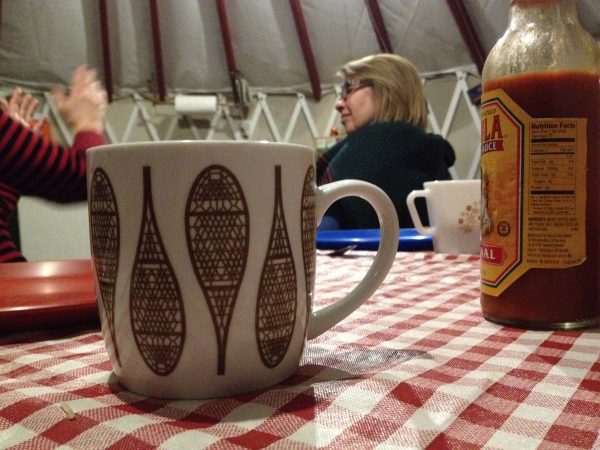 After an afternoon on the canyon rim we ate a hearty dinner, one of many enormous and delicious meals to come. The group got to know each other a little better over wine and food. One of the highlights of both my trips with Yellowstone Expeditions was getting to know the people I shared this unusual winter experience with.
After an afternoon on the canyon rim we ate a hearty dinner, one of many enormous and delicious meals to come. The group got to know each other a little better over wine and food. One of the highlights of both my trips with Yellowstone Expeditions was getting to know the people I shared this unusual winter experience with.
Fellow traveler Kit Johnson agreed, “I didn’t expect such a lovely cast. The motherly charm of the camp cook was delightful, as was the hardworking group of young guides.”
The following morning we rose for a big breakfast before heading into the snow in two groups. The snowshoers followed Kayla to backcountry mudpots few people encounter.
To get to the mudpots they tromped through “knee deep snow, the lightest and driest powder I’ve seen in years,” said Dave Johnson. “It was totally untracked snow as far as the eye could see. Awesome!” Even the last person in line was breaking trail through Yellowstone’s famous deep, dry snow.
I recalled passing from meadow into trees and then to the mudpots. The ground was bare of snow, melted by steam escaping from cracks and fissures in the ground and a magma plume just a few miles beneath the earth’s crust. Ooey, gooey liquid rock, thicker than pudding gurgled and plopped all around them.
Having visited the mudpots on my first trip, I ventured into the unknown with the ski group. We skiers walked through similarly deep and dry snow to hot springs in the Hayden Valley. Since there is no summer trail, I imagined that not many of Yellowstone’s 4 million plus visitors had been here. Though the ski in was barely uphill, we struggled through the snow, panting as we went.
At the hot springs, we removed our skis to carefully walk along the edge of the hot spring basin. Steam filled the backdrop from one spring, and the warm runoff provided a safe home for colorful bacteria and archae.
Circling around a small hill, skis returned to our feet, we climbed and then descended a hill. The snow was so deep and the skis so skinny, that turning was almost impossible. The best choice was to point our tips downhill and ride it out. Unfortunately, this was not enough for me, and I fell into the deep, deep snow. The fall was fine, getting out of my hole took a good five minutes and a lot of work.
In Paul Schullery’s book, Yellowstone’s Ski Pioneers, he quotes a description by Lewis Freeman of each new army garrison learning to ski. “They grow as enthusiastic as a lot of children with new sleds,” Freeman describes. “Falls? Of course there are falls, terrific ones at that, but no one seems to mind. Imagine 160 pounds of man, going at the rate of half a mile or more a minute, suddenly dashed to the snow…Lucky he is if some erratic slider from above does not ride him down before he can regain his footing. Sometimes his fall is complicated…But they all get up in some way or other and edge back to the top of the zigzag courses.”
We did not edge back up the hill, but rather returned to the snowcoach and the comfort of the yurts.
At dinner, the whole reunited. Banded together at least forty miles from any town, our group exchanged stories, had inappropriate dinner conversations, and came together in our isolation from the rest of the world.
That too, is part of the magic of winter in Yellowstone. Throughout its history as a national park, people have gathered together in tiny shelters or little hotels to find refuge from blizzards and cold nights. Today winter visitors can enjoy the luxuries of the Old Faithful Snowlodge or the Mammoth Inn—both fun places to while away a few winter days—but the yurt camp is more out there, more smack in the middle of winter—despite the gastronomic delights, the hot shower and the dry sauna.
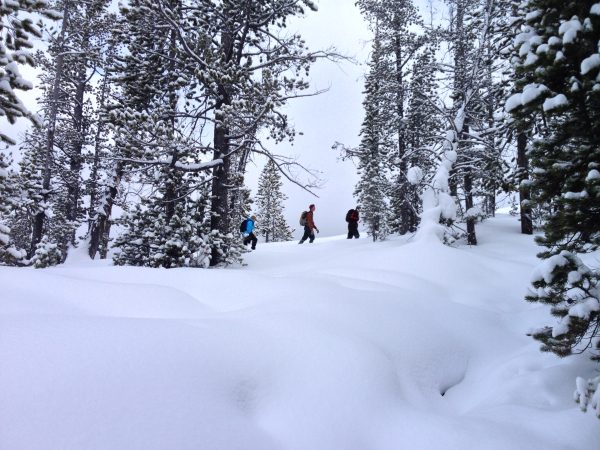 On the final morning of our stay, the whole group snowshoed from Artist Point to Ribbon Lake–starting with terrific views of the Grand Canyon of the Yellowstone, and ending at a snow-covered lake. It was the perfect ending to a few days getting to know interesting, funny people, and soaking my body and brain in Yellowstone’s winter air.
On the final morning of our stay, the whole group snowshoed from Artist Point to Ribbon Lake–starting with terrific views of the Grand Canyon of the Yellowstone, and ending at a snow-covered lake. It was the perfect ending to a few days getting to know interesting, funny people, and soaking my body and brain in Yellowstone’s winter air.
During our time in Wonderland we watched a bobcat hunt along the edge of the Madison River. We saw bison sprinting playfully in the snow. Bright green algae contrasted oddly with the white snow. We laughed at golden eyes surfing over little waves in the river like expert kayakers, eddying out before surfing again. Fat flakes clung to tree branches and dropped down our necks when we snowshoed too close. There was so much nature, beauty, adventure and camaraderie in those few days, that I can’t imagine why more people don’t flock to Yellowstone in winter, but maybe its better (for me) that they don’t.
In the late 1800s, Thomas Elwood Hofer, one of Yellowstone foremost winter travelers commented, “A great many people with a few days practice on snowshoes, can see part or all the Park in winter and be repaid for their trouble…in addition to the game to be seen, certain features of the Park are much more interesting in winter than in summer.”
There may still be reason to be suspicious of winter travelers in Yellowstone, but after my four days at Canyon—despite the cold, the endless trail breaking in deep snow, and the long dark nights—I’d be more suspicious of someone who didn’t take the opportunity to experience Yellowstone in its most serene, yet stirring season.

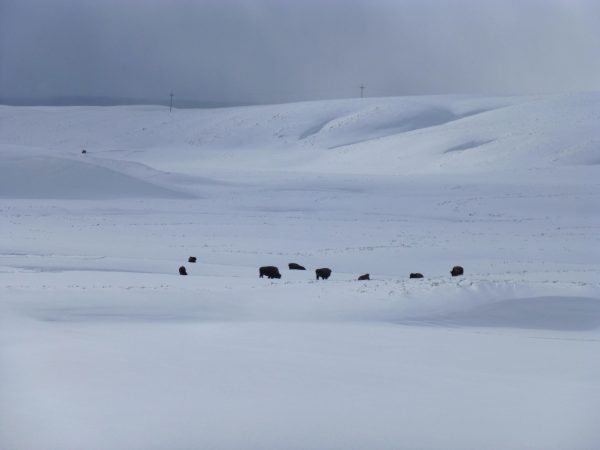
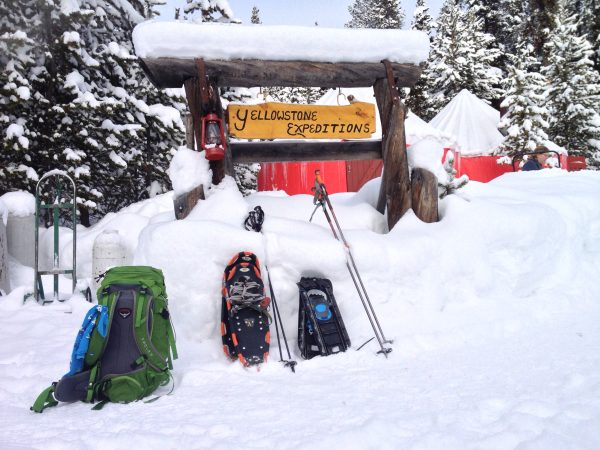
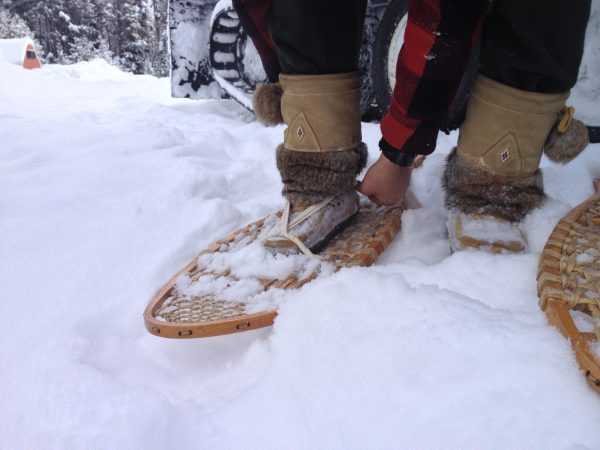
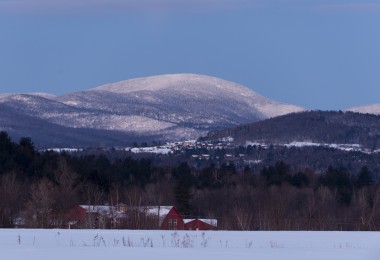
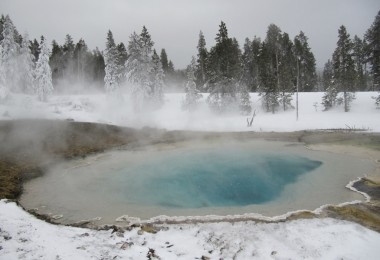
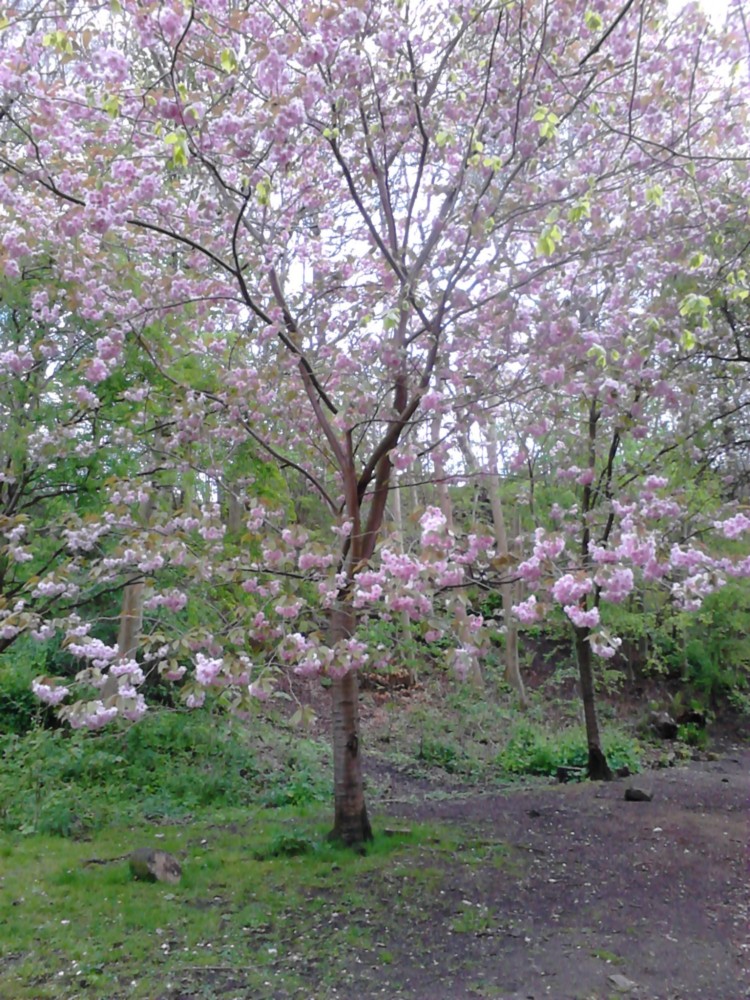
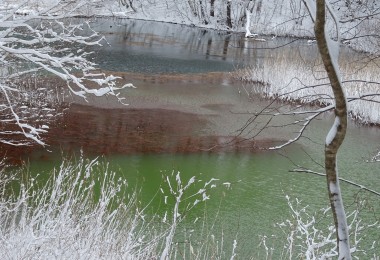

This looked like a lot of fun! I have always wanted to visit Yellowstone and this posts makes me want to visit even more! Hopefully i make it there in 2017!
WOW! Just WOW! I am desperate to see that part of the world and finally I think 2017 is going to be the right moment.. Thank you for sharing such a great post! 🙂
It truly does look like a winter wonderland! I haven’t been to a ski resort or went snow skiing, but reading this post makes me want to!!!
wow it looks like a fairytale winter wonderland. Sometimes I wish we had snow and cold like that here, but when it happens, I am sick of it too quickly. Glad you could enjoy it for some time!
My favorite way to see Yellowstone!
What an awesome trip. Looks like the yellowstone region is as beautiful in all seasons
I’m not a fan of snow shoeing but I’d be willing to brave it for this. And be considered a suspicious person by the US army. Winter does put a certain spin on a national park. One of pure beauty and charm.
You are so brave, I don’t know if I would have been able to stand all that cold and snow. I am not good with cold. The trip sounds very dreamy, with the surroundings covered in snow and the passing by of hot springs. I can only imagine.
I’ve only been to Yellowstone once before (over the summer), so it’s nice to see what options are available for visitors during the winter months. Snowshoeing looks like a lot of fun! Also staying in a yurt would be a super unique experience, thank you for sharing!!
Yellowstone’s on the bucket list! Great pictures and super informative post. Keep it up!